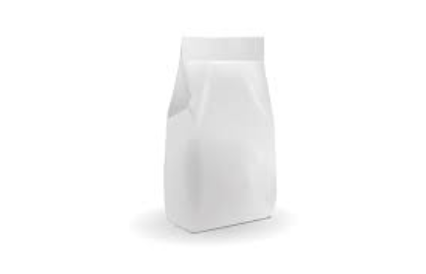
BOPP bags, or Biaxially Oriented Polypropylene bags, are a cornerstone of modern packaging solutions. These bags offer a unique combination of strength, aesthetics, and adaptability, making them an ideal choice for industries such as agriculture, retail, and construction. In this blog, we will explore what BOPP bags are, how they are manufactured, their advantages, applications, and how they contribute to sustainability.
What Are BOPP Bags?
BOPP bags are made from biaxially oriented polypropylene, a type of plastic that is stretched in two directions to improve strength, clarity, and flexibility. These bags feature a laminated surface that can display high-quality, multicolor prints, making them not only functional but also visually appealing. BOPP bags are primarily used for packaging granular or powdered products due to their durability and protective qualities.
How Are BOPP Bags Made?
The production of BOPP bags involves several key steps:
-
Extrusion: Polypropylene is melted and extruded into thin films.
-
Biaxial Orientation: The films are stretched both lengthwise and widthwise to enhance their mechanical properties.
-
Printing: The oriented film is printed using advanced rotogravure or flexographic printing techniques for vibrant, detailed designs.
-
Lamination: The printed film is laminated onto a woven polypropylene fabric to add strength and weather resistance.
-
Fabrication: The laminated fabric is cut and stitched into bags, often with additional features like handles, spouts, or zippers.
Features of BOPP Bags
-
Durability: Designed to withstand heavy loads and harsh handling.
-
High-Quality Printing: Supports detailed, multicolor printing for branding and marketing.
-
Water and Moisture Resistance: The laminated surface prevents moisture from damaging the contents.
-
Lightweight: Offers strength without adding significant weight.
-
Customizable: Available in various sizes, shapes, and designs to meet specific needs.
Benefits of BOPP Bags
-
Enhanced Branding: High-quality printing turns packaging into a powerful marketing tool, helping brands stand out on shelves.
-
Eco-Friendly: Reusable and recyclable, BOPP bags contribute to sustainability efforts.
-
Cost-Effective: Durable yet lightweight, these bags reduce transportation and storage costs.
-
Versatile: Suitable for a wide range of applications, from agricultural products to consumer goods.
-
Long-Lasting: Resistant to tearing, punctures, and environmental factors like UV exposure.
Applications of BOPP Bags
1. Agriculture
BOPP bags are widely used for packaging grains, seeds, fertilizers, and animal feed. Their moisture resistance and strength make them ideal for protecting agricultural products during storage and transport.
2. Retail
In the retail sector, BOPP bags are used for flour, sugar, and other grocery items. Their high-quality prints and durability make them appealing to both consumers and retailers.
3. Construction
Construction materials like cement, sand, and chemicals are commonly stored and transported in BOPP bags due to their heavy-duty construction and resistance to wear and tear.
4. Food Industry
BOPP bags are frequently used in the food industry to package products like snacks, rice, and spices. Their airtight sealing and vibrant designs help maintain freshness and attract customers.
5. Industrial Use
For powders, granules, and other industrial materials, BOPP bags offer a reliable and cost-effective packaging solution.
Types of BOPP Bags
-
Transparent BOPP Bags
-
Allow visibility of the contents inside.
-
Ideal for showcasing high-quality products.
-
-
Printed BOPP Bags
-
Feature multicolor, high-resolution prints for branding.
-
Commonly used in retail and food packaging.
-
-
Matt Finish BOPP Bags
-
Provide a premium look and feel.
-
Popular for high-end consumer goods.
-
-
Multi-Layer BOPP Bags
-
Offer added strength and durability for heavy-duty applications.
-
-
Custom BOPP Bags
-
Tailored to meet specific customer requirements, including unique sizes, colors, and features.
-
How to Choose the Right BOPP Bag
When selecting BOPP bags, consider the following factors:
-
Product Requirements
-
Determine the weight, size, and storage needs of your product.
-
-
Material Properties
-
Choose bags with the appropriate thickness and strength for your application.
-
-
Printing Needs
-
Opt for customizable designs to enhance branding.
-
-
Environmental Considerations
-
Select recyclable or biodegradable options to align with sustainability goals.
-
-
Additional Features
-
Decide if features like zippers, spouts, or tear notches are necessary for convenience.
-
Sustainability of BOPP Bags
BOPP bags contribute to eco-friendly packaging solutions in several ways:
-
Recyclability: Made from polypropylene, these bags can be recycled, reducing plastic waste.
-
Reusability: Their durability allows multiple uses before disposal.
-
Energy Efficiency: The manufacturing process of BOPP bags consumes less energy compared to other packaging materials.
-
Innovative Materials: Manufacturers are increasingly exploring biodegradable options to minimize environmental impact.
Tips for Using BOPP Bags Effectively
-
Proper Sealing
-
Ensure the bags are sealed tightly to protect contents from moisture and contamination.
-
-
Storage Conditions
-
Store bags in a dry, cool environment to maintain their integrity.
-
-
Handle with Care
-
Avoid overloading bags beyond their specified capacity to prevent damage.
-
-
Leverage Branding
-
Use high-quality prints to reinforce brand visibility and consumer trust.
-
Conclusion
BOPP bags have transformed the packaging industry by offering a unique combination of durability, versatility, and aesthetic appeal. From agriculture to retail, these bags provide reliable solutions for a wide range of applications while supporting sustainability efforts. By choosing the right type of BOPP bag and leveraging their customizable features, businesses can enhance their packaging efficiency, reduce costs, and strengthen their brand presence. Whether for heavy-duty industrial use or eye-catching retail packaging, BOPP bags are a trusted choice in modern packaging solutions.





Leave a Reply